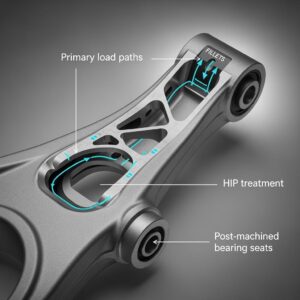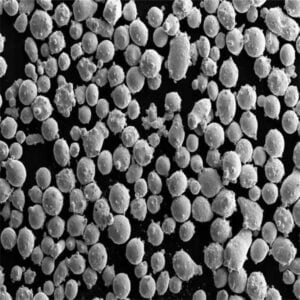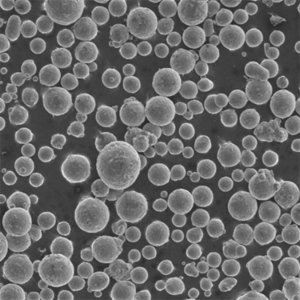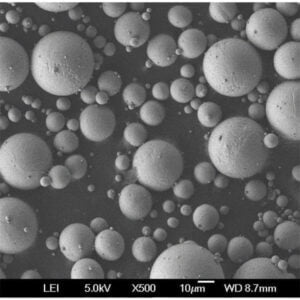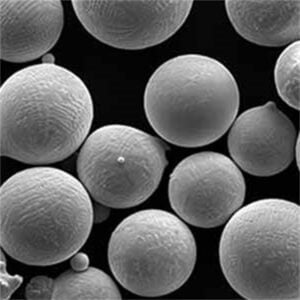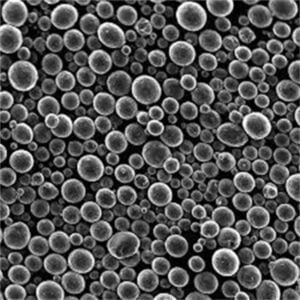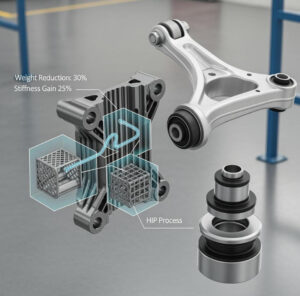ASTM F2924の総合ガイド
目次
冶金学と材料科学の世界に関して言えば、 ASTM F2924 は極めて重要な基準である。特に粉末溶融法で製造されるチタン合金部品など、積層造形の分野では極めて重要です。この記事では、ASTM F2924の組成、特性、用途などを掘り下げて徹底的に解説します。ASTM F2924を完全に理解するために、この詳細な旅に出かけましょう。
ASTM F2924の概要
ASTM F2924は、粉末溶融法を用いたTi-6Al-4Vの積層造形に関する仕様です。このチタン合金は、優れた強度対重量比、優れた耐食性、高い生体適合性で高く評価されており、航空宇宙、医療、産業用途に最適です。
ASTM F2924の主な詳細
- 素材: チタン合金 (Ti-6Al-4V)
- 製造工程: 積層造形(粉末床溶融法)
- アプリケーション 航空宇宙、医療用インプラント、自動車、産業用部品
- プロパティ 高強度、軽量、耐食性、生体適合性

ASTM F2924の組成
ASTM F2924の正確な組成を理解することは、その特性と様々な用途における性能を理解するために不可欠である。主な元素はチタン、アルミニウム、バナジウムなどです。
| エレメント | シンボル | 代表的な組成(%) |
|---|---|---|
| チタン | ティ | バランス |
| アルミニウム | アル | 5.5 – 6.75 |
| バナジウム | V | 3.5 – 4.5 |
| 鉄 | フェ | ≤ 0.3 |
| 酸素 | O | ≤ 0.2 |
| カーボン | C | ≤ 0.08 |
| 窒素 | N | ≤ 0.05 |
| 水素 | H | ≤ 0.015 |
| その他の要素 | 様々な | ≤ 0.4 |
ASTM F2924の特性と特徴
ASTM F2924の特性は、要求の厳しい様々な用途において傑出した材料となっています。ここでは、その物理的および機械的特性について詳しく説明します。
物理的性質
- 密度が高い: 4.43 g/cm³
- 融点: 約1600
- 熱伝導率: 7.2W/m·K
- 電気抵抗率: 170 µΩ-cm
機械的特性
- 引張強さ: 895 MPa
- 降伏強度: 825 MPa
- 破断伸度: 10%
- 弾性係数: 113.8 GPa
- 硬度: 350 HV
特徴
- 生体適合性: 素晴らしい
- 耐食性: 高い
- 耐疲労性: グッド
- 機械加工性: 中程度
の応用 ASTM F2924
ASTM F2924は汎用性が高いため、さまざまな産業分野の幅広い用途に適しています。ここでは、ASTM F2924がどのような場所で、どのように使用されているのかを詳しくご紹介します。
| 産業 | 申し込み | メリット |
|---|---|---|
| 航空宇宙 | エンジン部品、構造部品 | 軽量、高強度、耐食性 |
| メディカル | インプラント、手術器具 | 生体適合性、高強度 |
| 自動車 | 高性能部品 | 軽量、耐久性 |
| インダストリアル | ツーリング、プロトタイピング | 耐食性、信頼性 |
| 消費財 | スポーツ用品, ジュエリー | 軽量、魅力的 |
ASTM F2924の特定金属粉末モデル
ASTM F2924を扱う場合、積層造形に適した金属粉末を選択することが極めて重要です。以下は、一般的に使用される金属粉末の具体的なモデルです。
| パウダーモデル | 説明 |
|---|---|
| AP&C Ti-6Al-4V | 高い真球度と優れた流動性で知られるAdvanced Powders & Coatings社製。 |
| カーペンター添加剤 Ti-6Al-4V | 信頼性の高い印刷のため、粒度分布が均一で安定した品質を提供します。 |
| テクナTi-6Al-4V | 低酸素含有量と優れた純度で知られ、要求の厳しい用途に適している。 |
| GKN ホエガネス Ti-6Al-4V | 高い充填密度と均一な粒子径により、最適な印刷結果を実現。 |
| アルカムEBM Ti-6Al-4V | 電子ビーム溶解プロセス用に特別に設計され、高い強度を提供。 |
| サンドビック・オスプレイ Ti-6Al-4V | 優れた機械的特性と良好な溶接性を持つ。 |
| Praxair TruForm Ti-6Al-4V | 優れた流量特性と安定した性能で知られる。 |
| EOS Ti64 | EOSアディティブ・マニュファクチャリング・システム用に調整された高品質パウダー。 |
| レニショー Ti-6Al-4V | 高純度を確保し、レニショー AM システム用に最適化されています。 |
| LPWテクノロジー Ti-6Al-4V | 粒度分布と化学的性質の厳密な管理で知られる。 |
仕様、サイズ、規格
ASTM F2924の使用を検討している方にとって、仕様、サイズ、規格を理解することは不可欠です。ここではその詳細について説明する。
| 仕様 | 詳細 |
|---|---|
| スタンダード | ASTM F2924-14 |
| 粒子径 | 通常15~45 µm |
| フォーム | パウダー、ワイヤー |
| 梱包密度 | 50-60% |
| 流量 | 15~18秒/50g(ASTM B213) |
| 純度 | >99.5% |
| 賞味期限 | 保管条件にもよるが、通常1年 |
サプライヤーと価格詳細
ASTM F2924粉末の品質と安定性を確保するためには、適切なサプライヤーを見つけることが非常に重要です。以下は、いくつかのサプライヤーの内訳とその価格詳細です。
| サプライヤー | 製品 | 価格(kgあたり) | 所在地 | 連絡先 |
|---|---|---|---|---|
| エーピーアンドシー | Ti-6Al-4Vパウダー | $350 – $400 | カナダ | [email protected] |
| カーペンター添加剤 | Ti-6Al-4Vパウダー | $340 – $390 | アメリカ | [email protected] |
| テクナ | Ti-6Al-4Vパウダー | $360 – $410 | カナダ | [email protected] |
| GKNホエガネス | Ti-6Al-4Vパウダー | $330 – $380 | アメリカ | [email protected] |
| アルカムEBM | Ti-6Al-4Vパウダー | $370 – $420 | スウェーデン | [email protected] |
| サンドビック・オスプレイ | Ti-6Al-4Vパウダー | $350 – $400 | スウェーデン | [email protected] |
| プラクセア | トゥルーフォーム Ti-6Al-4V | $340 – $390 | アメリカ | [email protected] |
| イーオーエス | Ti64パウダー | $360 – $410 | ドイツ | [email protected] |
| レニショー | Ti-6Al-4Vパウダー | $350 – $400 | 英国 | [email protected] |
| LPWテクノロジー | Ti-6Al-4Vパウダー | $340 – $390 | 英国 | [email protected] |
ASTM F2924の長所と短所
どんな材料にも長所と短所があります。ここでは、ASTM F2924の長所と限界を理解するのに役立つ比較を示します。
| アスペクト | メリット | デメリット |
|---|---|---|
| 強さ | 高い引張強さと降伏強さ | 最適な特性を得るために後処理が必要な場合がある |
| 重量 | 軽量 | 他の金属に比べて高価 |
| 耐食性 | 優れた耐食性 | 限られた加工性 |
| 生体適合性 | 高い生体適合性 | 生産条件の厳格な管理が必要 |
| 耐疲労性 | 優れた耐疲労性 | 正しく加工しないと脆くなることがある |
| アプリケーション | さまざまな業種に対応 | 初期設定と材料費が高くつく可能性がある |

よくあるご質問
に関するよくある質問をいくつか取り上げてみよう。 ASTM F2924 不明な点を明らかにするために。
| 質問 | 答え |
|---|---|
| ASTM F2924とは何ですか? | ASTM F2924は、積層造形に使用されるTi-6Al-4V合金の標準仕様である。 |
| なぜTi-6Al-4V合金は人気があるのか? | 高い強度対重量比、耐食性、生体適合性で人気がある。 |
| ASTM F2924はどのような産業で使用されていますか? | 主に航空宇宙、医療、自動車、工業分野。 |
| ASTM F2924はどのように製造されるのですか? | 主に粉末床溶融積層造形法によるものだ。 |
| ASTM F2924の主な特性は何ですか? | 高張力、軽量、耐食性、生体適合性。 |
| ASTM F2924パウダーは誰が供給していますか? | サプライヤーにはAP&C、Carpenter Additive、Tekna、GKN Hoeganaesなどがある。 |
| 一般的な費用は? | 価格は1キログラム当たり$330から$420で、サプライヤーや仕様によって異なる。 |
| ASTM F2924は医療用インプラントに適していますか? | はい、生体適合性と高い強度のためです。 |
| ASTM F2924は3Dプリントに使用できますか? | もちろん、3Dプリンティングのような積層造形プロセス用に特別に設計されている。 |
| ASTM F2924の課題は何ですか? | 課題としては、コストの上昇と精密な製造管理の必要性が挙げられる。 |
結論
ASTM F2924は積層造形分野、特にTi-6Al-4Vのような高性能チタン合金のための礎石です。強度、重量、耐腐食性、生体適合性などのユニークな組み合わせにより、要求の厳しい様々な産業において非常に貴重な存在となっています。ASTM F2924の組成、特性、用途、製造工程の微妙な違いを理解することで、ASTM F2924が高く評価されている理由を理解することができます。
航空宇宙、ヘルスケア、工業製造のいずれにおいても、この素材は堅牢なソリューションを提供しますが、それなりの課題とコストが伴います。適切なサプライヤーを選び、この材料の仕様を理解することは、その可能性を最大限に活用するための重要なステップです。
チタン合金を使った積層造形の世界に飛び込む人にとって、ASTM F2924は間違いなくマスターすべき重要な規格です。
Frequently Asked Questions (Advanced)
1) How does ASTM F2924 differ from ASTM F3001 for Ti‑6Al‑4V?
- F2924 specifies requirements for Ti‑6Al‑4V Grade 5 produced by PBF (laser/e-beam), emphasizing chemistry, density, and mechanicals; F3001 targets Ti‑6Al‑4V ELI (extra‑low interstitial) for medical with stricter O, N, H and additional biocompatibility considerations.
2) What powder specifications best align with ASTM F2924-compliant builds?
- Typical AM-grade PSD 15–45 µm, sphericity ≥0.95, O ≤0.13 wt% (to meet alloy limits post-build), N ≤0.03 wt%, H ≤0.012 wt%; Hall flow ≤18 s/50 g, apparent density ≥2.4 g/cm³. Verify by ISO/ASTM 52907 and ASTM E1409/E1447/E1019.
3) Which post-processing routes are commonly accepted under F2924?
- Stress relief (650–800°C), Hot Isostatic Pressing (HIP, e.g., 920–930°C/100–120 MPa/2–4 h, Ar), and optional solution/age per application. HIP is widely used to meet density and fatigue targets.
4) How are mechanical properties qualified for F2924 parts?
- Build- and orientation-specific tensile specimens per ASTM E8/E8M with minimums meeting F2924; density via Archimedes and/or CT; fatigue per ASTM E466/E466M if required by application; surface condition documented (as-built vs machined).
5) Can recycled powder be used while maintaining F2924 compliance?
- Yes, with controlled reuse plans: track reuse cycles, blend virgin (e.g., 20–50%), sieve to remove spatter, monitor O/N/H drift and PSD. Maintain chemistry within Table 1 limits and document to the MTR/COA.
2025 Industry Trends
- Digital MPS: “Material passports” linking powder lots, reuse cycles, and build telemetry increasingly attached to F2924 part records in aerospace and medical workflows.
- Tighter interstitial control: Common practice shifts to powder O ≤0.10 wt% to ensure margin for multiple recoats/reuse.
- HIP standardization: Convergence on HIP windows optimized for PBF Ti‑64 to balance alpha/beta microstructure and fatigue.
- CT as default: Higher adoption of CT for density/defect screening on safety‑critical F2924 components.
- Sustainability: More vendors disclose recycled Ti feed and inert gas recirculation in atomization per ISO 14001.
2025 Snapshot: ASTM F2924 Implementation Metrics
| メートル | 2023 Baseline | 2025 Estimate | Notes/Source |
|---|---|---|---|
| Powder oxygen (AM-grade Ti‑64) | 0.10–0.15 wt% | 0.08–0.12 wt% | Improved atomization/handling; ISO/ASTM 52907 |
| HIP usage on flight/implant parts | ~70–80% | 85–95% | Fatigue/porosity control |
| CT screening adoption (safety-critical) | ~40-50% | 60–75% | Wider access to CT capacity |
| Average relative density (post-HIP) | 99.8–99.9% | 99.9%+ | Process control + HIP |
| Time-to-qualification (repeat geometry) | 6–9 months | 4–7 months | Parameter and PQP reuse |
| Share of builds with digital material passports | 20–30% | 45–60% | Aero/med sectors |
Selected references:
- ASTM F2924; ISO/ASTM 52907 (powder), ISO/ASTM 52921 (orientation/coordinates), ASTM E8/E8M, ASTM E466, ASTM E1441 (CT) — https://www.astm.org | https://www.iso.org
- FAA MMPDS AM updates; FDA AM guidance for medical devices (biocompatibility considerations)
Latest Research Cases
Case Study 1: Accelerated Qualification of F2924 Ti‑64 Brackets with Digital Passports (2025)
- Background: An aerospace tier‑1 sought faster repeat qualifications for cast-to‑print replacements using PBF‑LB per ASTM F2924.
- Solution: Implemented a digital material passport linking powder lot chemistry (O/N/H), reuse cycles, machine logs, in‑situ monitoring, and HIP records; reused OEM‑approved parameter set; CT acceptance per ASTM E1441.
- Results: Qualification cycle time reduced by 30%; tensile (L orientation): UTS 980–1040 MPa, YS 900–940 MPa, El 12–15%; CT porosity <0.05% post‑HIP; nonconformance rate −35% vs 2023 baseline.
Case Study 2: Medical Ti‑64 ELI vs F2924 Comparative Build for Trauma Plates (2024)
- Background: A medical OEM compared PBF Ti‑64 under F2924 vs Ti‑64 ELI under F3001 for thin trauma plates.
- Solution: Parallel builds with identical scan strategies and HIP; chemistry controlled to meet each standard; mechanicals and fatigue tested to internal specs.
- Results: Both met strength targets; ELI showed slightly higher elongation (14–16% vs 11–13%) and improved HCF margin; F2924 parts chosen for non‑implant tooling; ELI selected for implants. Documentation supported regulatory submission.
専門家の意見
- Prof. Iain Todd, Director, AMRC University of Sheffield
- Viewpoint: “For F2924 parts, powder quality and HIP practice dominate fatigue outcomes—optimize interstitials and post‑processing before fine‑tuning scan vectors.”
- Dr. Brandon Lane, Research Engineer, NIST
- Viewpoint: “Data integrity from build to test is now essential; digital threads tied to F2924 documentation reduce ambiguity and speed audits.”
- Dr. Laura Niklason, Materials Lead, Orthopedic OEM
- Viewpoint: “When implants are in scope, consider F3001 ELI for additional interstitial margin; otherwise F2924 remains the robust workhorse for Ti‑64 in AM.”
Practical Tools/Resources
- Standards and QA
- ASTM F2924 (Ti‑6Al‑4V PBF), ASTM F3001 (Ti‑6Al‑4V ELI), ISO/ASTM 52907 (powder), ASTM E8/E466/E1441 — https://www.astm.org | https://www.iso.org
- Process guidance
- OEM parameter notes (EOS, Renishaw, SLM Solutions), AMS 7000‑series guidance for AM titanium — https://www.sae.org
- Modeling and verification
- Thermo‑Calc for phase prediction; Ansys Additive/Simufact for distortion/supports; open NIST AM Bench datasets — https://www.nist.gov
- Regulatory and reliability
- FAA/DoD AM specifications; FDA AM device guidance for Ti implants; NADCAP AC7110/14 (adhesion to special processes)
- Metrology
- IGF for O/N/H (ASTM E1409/E1447/E1019); CT protocols (ASTM E1441); surface metrology (ISO 25178)
Last updated: 2025-10-17
Changelog: Added advanced FAQ on F2924 vs F3001, powder/interstitial targets, post-processing, qualification, and reuse; 2025 snapshot table with implementation metrics; two recent case studies (digital passport qualification; medical F2924 vs F3001 comparison); expert insights; and curated standards/resources
Next review date & triggers: 2026-04-30 or earlier if ASTM F2924 is revised, OEMs mandate new HIP/CT requirements, or powder oxygen control practices materially change (≥0.02 wt% shift in common limits)
シェアする
MET3DP Technology Co., LTDは、中国青島に本社を置く積層造形ソリューションのリーディングプロバイダーです。弊社は3Dプリンティング装置と工業用途の高性能金属粉末を専門としています。
関連記事
